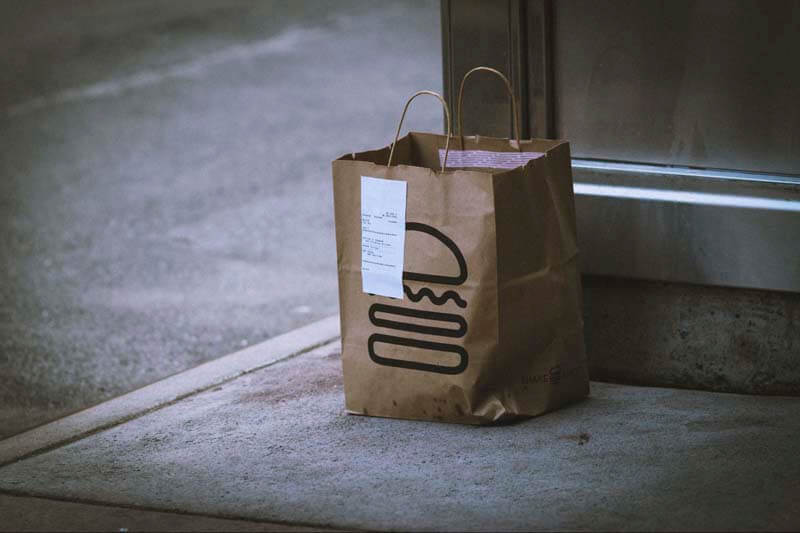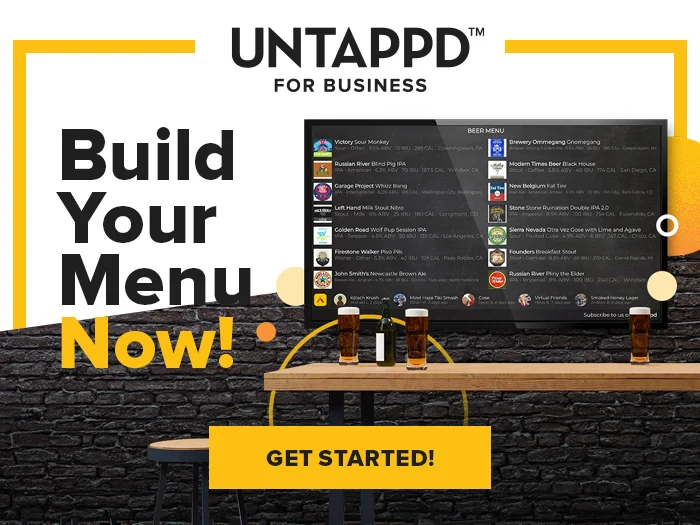
For the past few years, online ordering and delivery have become our new norm. Well, to be fair, consumers ordered food to their doorstep even before nationwide lockdowns started in early 2020, but the global pandemic greatly accelerated the trend. According to an article by McKinsey & Company, the global food delivery market is worth more than $150 billion, more than doubling during the COVID-19 pandemic.
In the four major markets where food delivery reigns supreme—Canada, Australia, the U.S, and the U.K.—the market has grown four to seven times larger than in 2018.
Since pandemic-related lockdowns started in March 2020, the growing food-delivery business has spiked to new heights in the most mature markets.

Graph courtesy of McKinsey & Company
At first, this was a contemporary shift for more traditional restaurants and eateries used to giving customer service in person. But by now, no-contact delivery has become the standard way to get food from your establishment to your customers’ homes.
Especially for those customers who are still cautious about venturing out to eat indoors or even those who just don’t want to get off the couch on a Saturday afternoon, they expect their food delivery to now come with the utmost care and safety in mind.
With that mind, it’s always good to review the ways you can maximize your contactless system, if you offer one. Or take a look at the best ways to set up no-contact delivery if it’s new to you.
Whether you’ve already implemented no-contact or contactless delivery or are finally considering it for the first time, here’s a guide on everything you need to know.
What We’ll Cover in This Piece:
What Does No-Contact Delivery Mean?

Photography courtesy of Kai Pilger | Unsplash
You probably know this already, but just to lay it out here: No-contact or contactless delivery is when your delivery driver or one from a third-party app—such as Uber Eats, Grubhub (now owns Seamless), DoorDash (now owns Caviar), or Postmates—leaves food on a customer’s doorstep without any interaction.
Instead of directly placing food in a customer’s hand, delivery drivers avoid any contact by just leaving orders in a safe place.
To successfully implement no-contact delivery, payment must be completed before delivery whether that’s through an order over the phone, an online payment service, or a third-party app/
What Are the Two Biggest Advantages of No-Contact Delivery?
1. Safety First
If you’re meeting your customers where they feel most comfortable, then it’s paramount that you provide a safe method of delivery.
We’re certainly in a period where most restaurants and bars have returned to business as usual. And while many are considering this a “post-pandemic” time, COVID-19 isn’t something that has completely gone away. In order to keep infection rates low, for the past few years health officials have encouraged social distancing. Sure, we’re all emerging from complete hibernation, but for some, following this advice is still top of mind. More than that, the entire way we operate day to day has completely changed. Probably for good, but at least for the foreseeable future.
Now, more often than not, no-contact delivery has just become the standard for the food and beverage industry.
No-contact delivery signals your business is conscious of the current situation and willing to continue to make your customers feel as safe and comfortable as possible.

Photography courtesy of Brett Jordan | Unsplash
2. More Revenue for Your Restaurant
A food delivery service in general can provide an additional revenue stream for your business.
According to a report from Statista, revenue in online food delivery is projected to reach $63 billion dollars in 2022 with over 185 million people projected to order food for delivery by 2025. For restaurants that implement food delivery, revenue is expected to increase by 12.2 percent this year.
And of those that are ordering food for delivery, fifty percent reported cleanliness as the most important factor to consider during their food delivery experience, based on a study conducted by the popular restaurant POS provider Toast.
If you’re looking to tap into this potentially monumental revenue opportunity, it’s crucial that you consider what’s most important to your customers—the quality of food and cleanliness are at the top of that list.
The Four Most Important Things to Consider for No-Contact Delivery

Photography courtesy McKinsey & Company
Now that we’ve established the importance of no-contact delivery, here are the four main things to consider as you implement it at your restaurant or bar.
1. Choose the Right Delivery Method
You have two choices: Do it yourself or hire a third-party service such as UberEats, Postmates, or Grubhub.
Both have their pros and cons, which we go into detail on in our article called Should You Start a Food Delivery Service?
So we’ll keep things simple here:
- Do-It-Yourself – Cuts out the middleman and collects all the revenue at the end of the day, but you’re responsible for providing an ordering platform, delivery vehicles, delivery drivers, etc.
- Third-Party App – Takes care of all the logistics, but also takes anywhere from a fifteen- to thirty-percent commission on all orders, according to a CNET report.
2. And Implement the Right Safety Measures
The whole point of no-contact delivery is to make things safe for your customers.
Here are the areas in your establishment you need to consider:
- Prep Areas – Consistently sanitize the places where you prep delivery food.
- Staff – Make sure those prepping food change their gloves between each order. Encourage keeping your staff six feet apart.
- Packaging – Consider adding a seal to your packaging to show consumers that it hasn’t been tampered with.
- Delivery – And of course, if you’re going with a do-it-yourself delivery system, make sure that your drivers are expertly trained on how to deliver the food. It wouldn’t be no-contact delivery if they physically hand food packages to the customer. Write out a plan and take your delivery drivers through all the steps, ensuring that they understand to leave food on a doorstep, in a lobby, etc. We also highly encourage you to make sure drivers are masked up when they deliver food, and use hand sanitizer or wash their hands in between deliveries. If you can, provide things like hand wipes to your drivers to ensure this step is followed.

Photography courtesy of Cristiano Pinto | Unsplash
3. Prepare Your Staff
If you’re using a third-party ordering app, you can probably pay less attention to this step as they’ll handle all the app ordering and delivery. Still, you’ll need to most likely dedicate one or more members of your staff just to handle deliveries.
Orders still need to be taken, delegated when they come in, and packed up when they go out.
If you’re not using a third-party app but are taking orders over the phone, it’s essential that you train your staff to take payment before the order goes out.
Because this is no-contact delivery, cash cannot exchange hands between your driver and the customer once the order leaves your establishment.
Also, it’s important that your staff working deliveries communicate with the customer to find out the logistics of where and how they’d like the package dropped off—right outside the door, in the lobby, etc, and do they want you to ring the doorbell or send a text that it has been delivered?
Lastly, your staff should be prepared to answer this question: How does your restaurant or bar handle no-contact delivery? You can bet that customers are still concerned with the steps your establishment has taken and all of your staff should be prepared to confidently answer.
If you’re starting food delivery for the first time, make sure that you update your client base by posting the news on your website, certainly on social media, and even through an email list if you have one.
Again, a third-party app is engineered to answer all these questions and handle a lot of these logistics, but if you’re going solo with no-contact delivery, you’ll need to figure out steps to find these answers.
4. Examine Your Delivery Menu
You don’t need to offer your entire menu for delivery. Consider that, as your food travels enroute to your customer, it could change. Fried food might arrive less than crispy or salads might wilt under the pressure of transportation. Regardless of whether you utilize your own fleet or one from a third party, you have less control over food quality once it leaves your restaurant or bar.
Take a look at your dishes and decide which would work best for delivery. A smaller menu has a ton of advantages: It will be easier for the kitchen to handle, simpler to execute efficiently (as soon as folks order delivery, you’re essentially on the clock), and help keep your food costs low.
When considering contactless delivery, take into account that your package might be sitting on someone’s doorstep for a certain amount of time. Sturdier dishes such as mac and cheese, pasta, pizza, rice bowls, soups, or even something like a meatloaf will probably fare better here.
Once you’ve settled on your menu, make sure you get that updated version posted everywhere from your social channels to Untappd.
Other Content You May Enjoy
To succeed and grow your restaurant, bar, or brewery you need to stand out in local search results. Whether someone is searching for the “best craft beer near me” or “top-rated seafood restaurant in [your city],” Local SEO (Search Engine Optimization) helps your business appear at the top of those search results.
With 81% of consumers using Google Search and Maps to find local businesses, and nearly 90% of customers choosing a business on the first page of search results, optimizing your online presence is essential.
This guide will walk you through Local SEO strategies tailored for restaurants, bars, and breweries, covering Google My Business, website optimization, online reviews, local backlinks, and more.
By the end of this guide, you’ll have a step-by-step action plan to increase your search rankings, attract more local customers, and grow your business.
In today’s digital world, having a well-designed, functional website is essential for restaurants, bars, and breweries. It goes beyond having social media. A great website can help attract new customers, showcase menus, accept reservations, and even drive online sales. But one of the most common questions business owners ask is: How much should a website cost in 2025?
The answer depends on several factors, including the type of website, features, complexity, and whether you choose a DIY solution or hire a professional web developer. Costs can range from a few hundred dollars for a basic website to tens of thousands for a fully customized, feature-rich platform.
This guide will break down website costs for restaurants, bars, and breweries, helping you understand the pricing landscape and choose the best solution for your business
Trivia nights have become an incredible marketing strategy for bars, restaurants, and breweries to draw in crowds and engage with new customers. With the recent collaboration between Geeks Who Drink, Timeplay, and the iconic television show Jeopardy!, businesses now have an exciting opportunity to host the Jeopardy! Bar League. This partnership combines the global brand recognition of Jeopardy! with Timeplay’s cutting-edge technology and the fun of live trivia from the experts at Geeks Who Drink.
In this piece we’ll cover what this new collaboration between these two trivia powerhouses is and how you can bring this unique experience to your venue.
In today’s world, both websites and social media platforms are crucial for a brewery, bar, or restaurant’s online presence. However, consumer habits show distinct preferences for each, depending on the context of their search or interaction.
In this guide, we’ll go over the basics, walk you through how to leverage these tools effectively, and show you how understanding these trends can help your venue better meet your customers’ expectations.
As a restaurant, bar, brewery, or any venue with a food and beverage program, having a modern, functional, and aesthetically pleasing website isn’t just a luxury—it’s a necessity.
No matter the size of your business, your new potential customers often interact with your website first—and first impressions matter.
In this piece, we’ll explore the top website trends shaping the online presence of hospitality businesses in 2025. These trends will help your venue stand out and attract more customers while creating a unique and modern experience to establish the perfect guest experience from start to finish.
For bar owners, hospitality managers, and small business owners, selecting the right gin brands is more than just filling the shelves—it’s about curating a distinctive customer experience. Gin has soared in popularity, becoming a staple of modern cocktail culture. With its complex botanical infusions, gin offers versatile, memorable flavors that can attract a wide range of customers. But with so many choices available, which brands should you prioritize to bring out the best in your gin menu?
This guide explores the seven best gin brands that have proven themselves through quality, craftsmanship, and unique flavor profiles. By understanding what makes each brand special, you and your staff will be better equipped to create a standout gin selection that delights your patrons, reinforces your brand’s reputation with a robust gin drinks menu, and helps you continue crafting classic and innovative gin cocktails.

